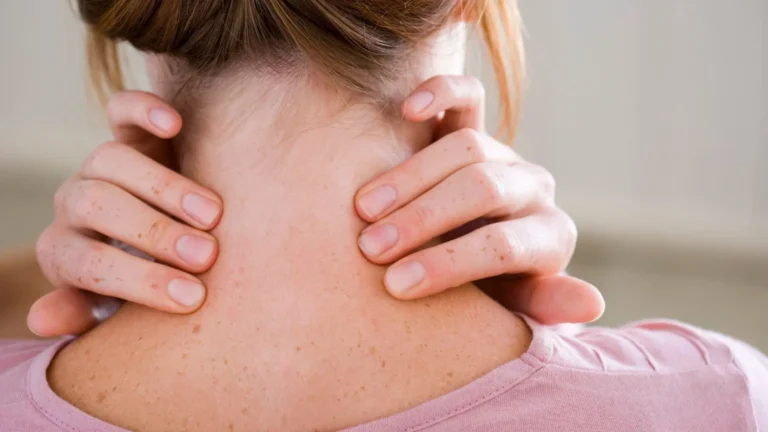Understanding the Spine and Its Role in Health
Your spine does a lot more than just keep you upright. It’s the backbone (literally) of your body, providing support, flexibility, and protection for your spinal cord. Every move you make—bending, twisting, even just sitting—depends on a healthy spine. When it’s in good shape, it keeps your nerves working properly and helps you avoid chronic pain or mobility issues. Understanding how it all works is key to keeping your spine healthy and preventing spinal conditions.
Structure and Function of the Spine

The spine is made up of 33 vertebrae, inter-vertebral discs, joints, ligaments, and muscles, all working together to support the body. It serves three primary functions:
- Support and Stability – It acts as the central structural framework, bearing the body’s weight and facilitating movement.
- Protection – It safeguards the spinal cord, a vital part of the nervous system that transmits signals between the brain and the body.
- Mobility and Flexibility – The spine enables a wide range of movements, including bending, twisting, and extending.
Regions of the Spine (Cervical, Thoracic, Lumbar, Sacral, Coccygeal)
The spine is divided into five distinct regions, each serving a unique function:
- Cervical Spine (Neck) – Comprising seven vertebrae (C1-C7), it supports the head and allows for extensive movement.
- Thoracic Spine (Upper Back) – Made up of 12 vertebrae (T1-T12), this region is connected to the ribs and provides stability.
- Lumbar Spine (Lower Back) – Consisting of five vertebrae (L1-L5), it bears the most weight and is prone to spinal conditions such as herniated discs and spinal stenosis.
- Sacral Spine (Pelvic Region) – Five fused vertebrae (S1-S5) form the sacrum, connecting the spine to the pelvis.
- Coccygeal Spine (Tailbone) – The coccyx consists of four small fused bones that provide minor support and serve as an attachment point for ligaments and muscles.
The Vertebrae and Inter-vertebral Discs
Each vertebra is separated by inter-vertebral discs, which act as shock absorbers. These discs consist of two main components:
- Annulus Fibrosus – The tough outer ring that maintains disc integrity and absorbs stress.
- Nucleus Pulposus – The gel-like core that provides cushioning and flexibility. Over time, discs can degenerate due to aging, excessive strain, or poor posture, leading to spinal conditions such as herniated discs and degenerative disc disease.
Ligaments, Joints, and Muscles Supporting Spinal Stability

- Ligaments – These connective tissues provide stability and limit excessive spinal motion. Key ligaments include the anterior and posterior longitudinal ligaments, ligamentum flavum, and interspinous ligaments.
- Joints – Facet joints between vertebrae enable controlled movement while preventing overextension.
- Muscles – Core and back muscles, including the erector spinae and multifidus, support posture and spinal motion.
Spinal Motion and Articulations
The spine moves in multiple directions due to its flexible structure. The primary movements include:
- Flexion and Extension – Bending forward and backward, mainly in the lumbar and cervical regions.
- Lateral Flexion – Side bending, controlled by the facet joints and spinal muscles.
- Rotation – Twisting motion, occurring primarily in the cervical and thoracic spine. Proper spinal articulation allows for pain-free movement, while joint degeneration or injury can lead to stiffness and discomfort, resulting in spinal conditions.
Common Spinal Conditions in Malaysia
Scoliosis and Spinal Deformities

Scoliosis is an abnormal lateral curvature of the spine, which can be congenital or develop over time. It may be idiopathic (unknown cause), neuromuscular (due to conditions like cerebral palsy), or degenerative (caused by aging and disc deterioration).
Other spinal deformities include:
- Kyphosis – An excessive forward curvature of the upper back, leading to a hunched posture. It can result from osteoporosis, poor posture, or congenital defects.
- Lordosis – An exaggerated inward curvature of the lower back, often associated with obesity, muscular imbalances, or spinal conditions.
Ankylosing Spondylitis
A chronic inflammatory disease that primarily affects the spine, leading to progressive stiffness and fusion of vertebrae. Over time, this can result in a rigid spine, limiting mobility and causing pain. It commonly affects young adults and may be associated with genetic factors, particularly the HLA-B27 gene.
Spinal Cord Injuries and Fractures

Trauma-related spinal injuries can range from mild fractures to severe spinal cord damage. These injuries include:
- Broken Neck or Back – Fractures in the cervical, thoracic, or lumbar spine can lead to significant pain, instability, and in severe cases, paralysis.
- Spinal Cord Damage – Injuries to the spinal cord can result in permanent loss of function below the site of injury, affecting movement, sensation, and organ function.
Non-Surgical Spine Care and Recovery Options
Spinal Decompression Therapy
A non-invasive treatment that uses controlled mechanical traction to relieve pressure on spinal discs. This therapy helps rehydrate discs, reduce nerve compression, and promote healing by improving nutrient flow into the discs. It is especially effective for spinal conditions such as herniated discs, degenerative disc disease, and spinal stenosis.
Chiropractic and Physiotherapy
Chiropractic care involves spinal adjustments to improve alignment, reduce nerve pressure, and restore function. Physiotherapy complements this by strengthening supportive muscles, improving posture, and reducing pain through targeted exercises and manual therapy.
Lifestyle Changes
- Ergonomics – Proper workspace setup reduces strain on the spine.
- Weight Management – Maintaining a healthy weight minimizes spinal stress.
- Movement Patterns – Regular stretching and mobility exercises prevent stiffness and degeneration.
When to See a Specialist
Seek medical attention if you experience:
- Sudden weakness or numbness in the legs
- Loss of bladder or bowel control
- Severe, unrelenting back pain
- Progressive difficulty walking
Why Choose Regenesis Physiotherapy for Spinal Condition Treatments?
At Regenesis Physiotherapy, we combine professionalism, compassion, and expertise to help you recover from spinal conditions quickly and safely. Whether you’re dealing with a recent injury or managing a long-term condition, our licensed physiotherapists in Subang Jaya offer personalized care tailored to your needs.
Take the first step toward getting a healthy, strong spine. Contact us today to book your session and experience the benefits of professional physiotherapy care designed for active lifestyles.






